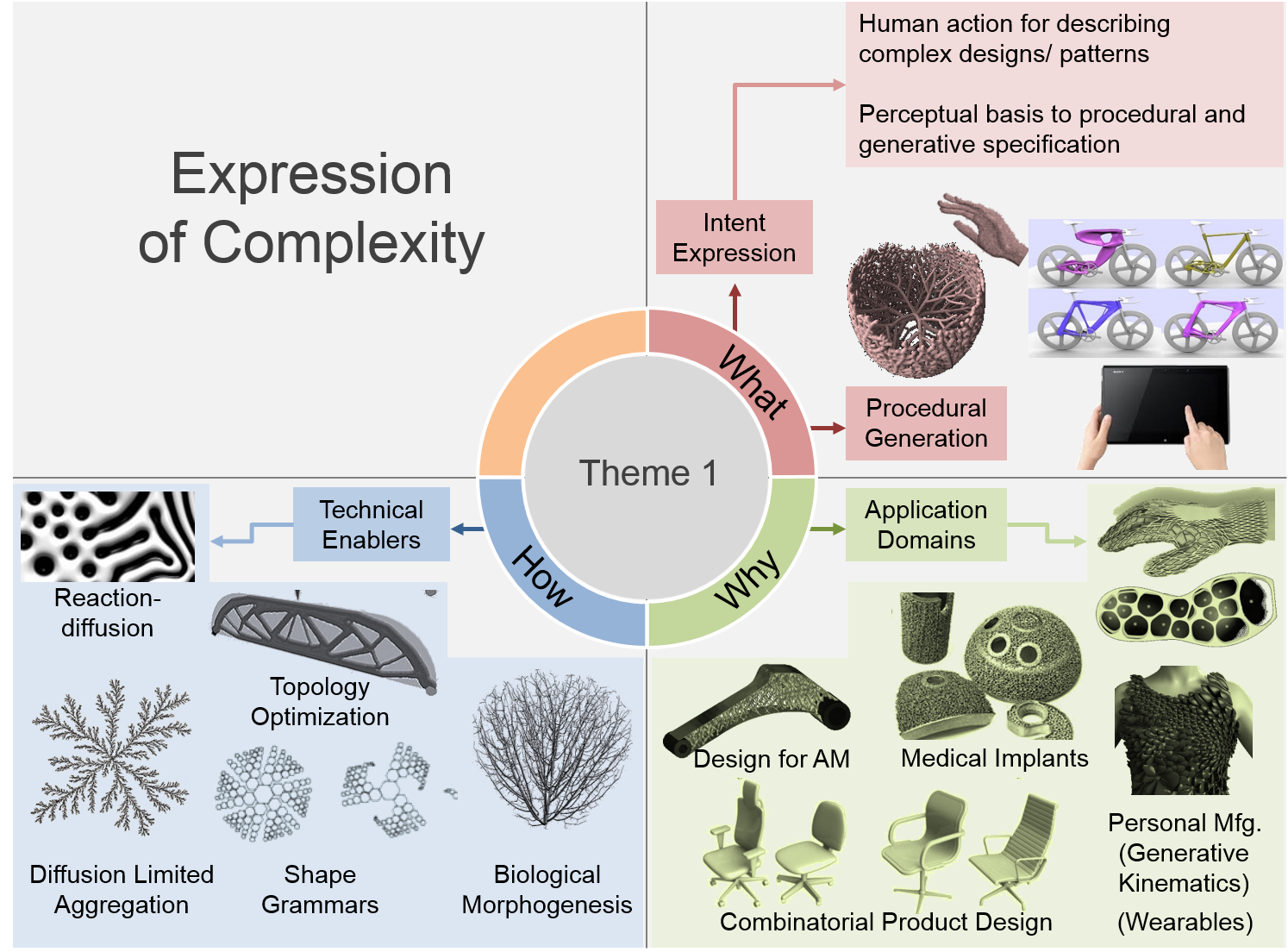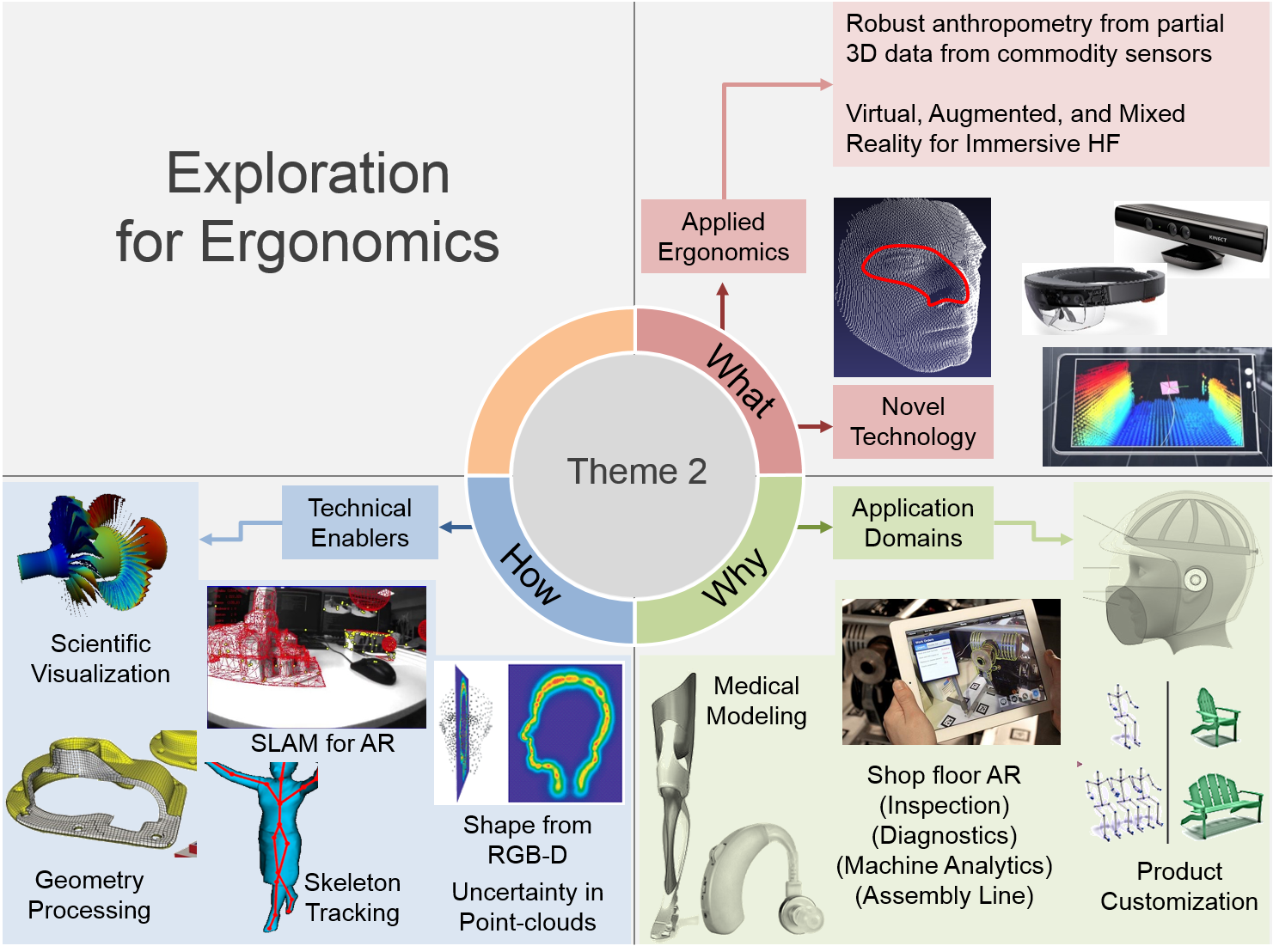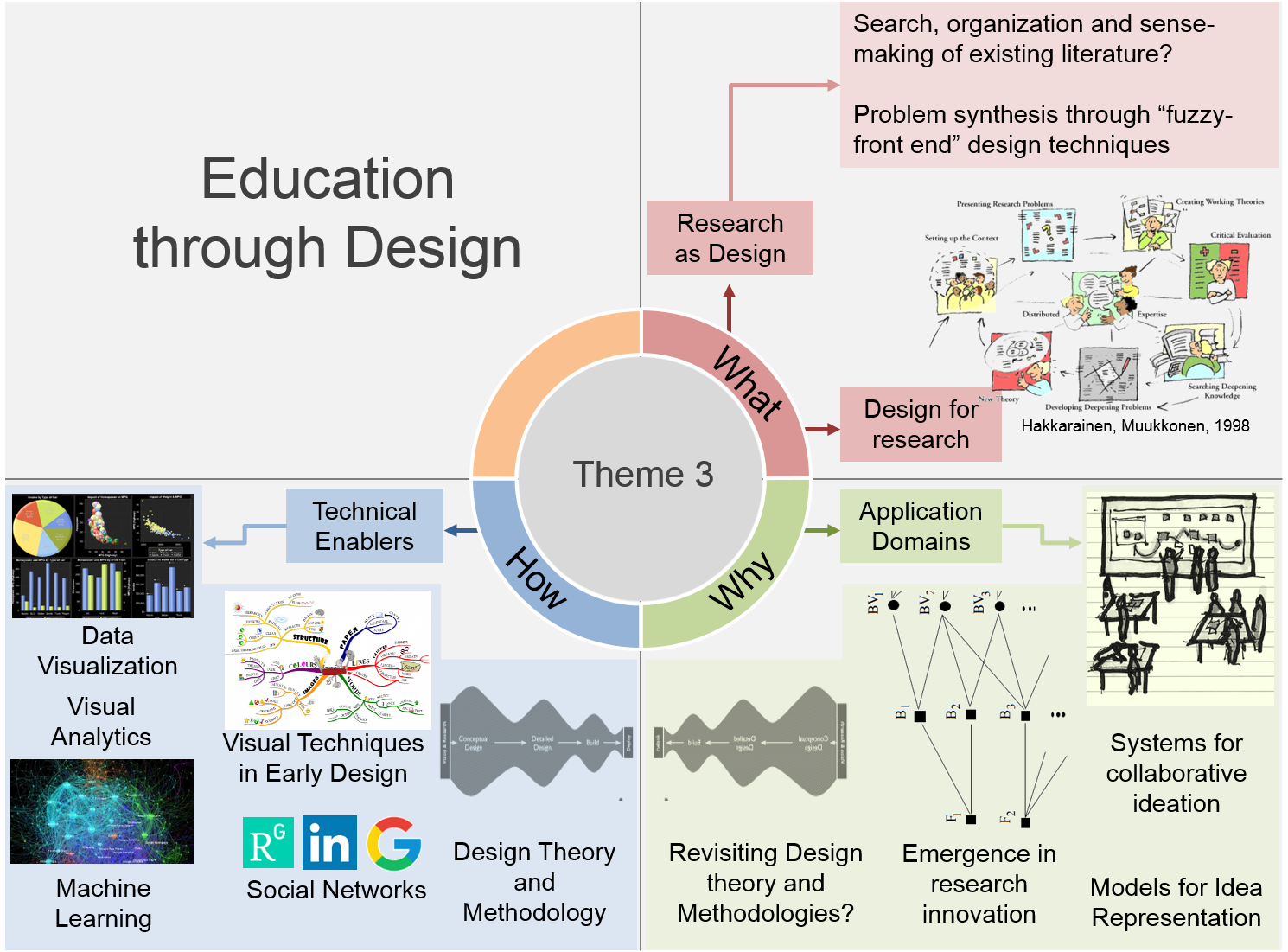Research Themes

Theme 1:
Access to 3D printing has made it possible for designers and artists to physically realize complex and organic shapes for product form exploration. Design of such complex patterns, both natural (e.g. trees) and man-made (e.g. architecture), have been studied in the context of generative modeling. However, there is limited body of work that provides insights on how humans perceive and express generative design patterns through simple interactive rules. Further, manufacturing considerations are typically invoked after the conceptualization stage and are mostly focused towards well-known and structured forms. This calls for design frameworks that embed analysis within the design of complex geometries towards feasibility and structural integrity of their corresponding physical prototypes.
This research theme explores these issues by integrating novel generative modeling metaphors with optimization approaches to facilitate ``structurally-aware'' complex designs in interactive settings. We will draw from existing perceptual theories to develop gestural languages towards representing and organizing emergent behaviors and generative processes through human actions.

Theme 2:
Computer-aided ergonomics has been extensively studied as an integral component of digital human modeling in the context of automotive design, aircraft design, and industrial assembly processes. Human factors, being integral to the design process, can play a vital role towards decision-making in the conceptualization of common products. Our objective, in this research theme, will be to explore interactive frameworks that embed ergonomics analysis within geometric modeling tools. The motivation is to provide designers with the capability to make human-centric decisions while exploring product form in early design phases.
The focus of this theme is to design, implement, and evaluate interactive design infrastructures that allow designers to explore product concepts. In particular, the plan is to use non-intrusive depth sensing technologies to: (a) develop geometry processing frameworks for reliable anthropometric measurement and (b) develop platforms for product design and customization in immersive virtual environments. This will allow the study of how designers integrate human factors within shape conceptualization while working with end-users as co-designers.

Theme 3:
Determination of a viable need, critical analysis of existing solutions, and non-linear paths of idea generation are common to both design and research. Design principles for generating and organizing ideas can be immensely beneficial to the research process. Finding the right research problem has become increasingly difficult due to two factors: (a) the inter-disciplinary nature of research problems and (b) increasing demand for real-world innovation. This research theme aims to explore how the techniques of design thinking can be transformed into tools for performing effective research.
The focus of this theme is to understand how design-inspired visual representations can help researchers search, organize and make sense of existing literature, current trends and unsolved problems in their respective fields. For this, we will develop tools that present design frameworks (such as SCAMPER, mind-maps, morphology, function decomposition etc.) to scholars for research ideation.